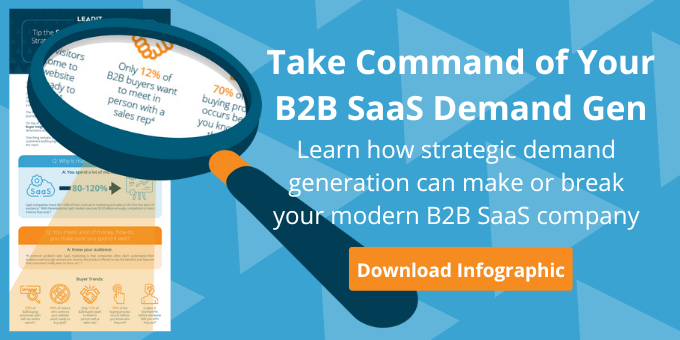SEO, SEM, and What It Means For Your Brand
How do the World Cup, 1980’s fashion, the Keto Diet, and Black Panther all relate to your business? They were the top Google searches in their respective categories in the United States in 2018. With billions of Google searches occurring each day, this is not a feat to overlook.
While you may not be competing for Google searches in sports, fashion, diet or movies, there are tons of searches in your respective category. How do you get your brand to the top?
The answer is search marketing, which is a strategy your brand cannot ignore in this digital age.
Growing companies can utilize search marketing to significantly gain visibility and drive website traffic. However, search marketing can only be executed effectively when there is clear comprehension of the two different approaches within search marketing: SEO and SEM.
While often used interchangeably, Search Engine Optimization (SEO) and Search Engine Marketing (SEM) are very different categories of search marketing. There are some discrepancies when defining SEO and SEM, —one will often be used as an umbrella term to encompass the other—so it is important to clarify them before planning your marketing strategy.
SEO refers to organic strategies to appear on Search Engine Results Pages (SERPs), and SEM uses paid strategies to appear on SERPs.
In this post, we’ll explore the differences between SEO and SEM, their unique benefits and drawbacks, and how to know which one your company should be prioritizing.
What is SEO?
In SEO, brands use organic tactics to improve their position on SERPs. In other words, instead of paying for a top placement on SERPS, a brand will apply a variety of strategic tools to increase their site’s value and authority so that they appear on page 1 of search results.
SEO is comprised of both on-page and off-page activities.
On-page SEO tactics help search engines understand the code and content on your individual website pages, and optimizes their appeal to the user and the search engine.
It includes strategic placement of keywords into:
- Titles
- Headings
- Alt Text
- Page Copy
However, using keywords is not the only aspect of On-Page SEO; it also includes:
- Making sure your page URLs have clean formats
- Quickening your page load speed
- Creating quality page copy
Off-Page SEO improves a website’s reputation and digital connectivity to strengthen its authority within a search engine so they receive a higher ranking.
Off-Page SEO includes:
- Acquiring high-quality backlinks (having other authoritative sites link to your site organically)
- Managing directory profiles
- Creating social bookmarking
All Off-Page SEO tactics help your site become reputable and authoritative.
What is SEM?
In SEM, which is often referred to as paid search or pay-per-click, a brand pays to appear at the top of SERPs in order to improve visibility and drive traffic to their website.
SEM is a three-part process:
- Brands can create keyword campaigns based on predicted searches of their target customers.
- When a user types in a keyword in the search bar, based on budget, the brand’s ad may appear at the top of those SERPs.
- The brand then pays for every time a user clicks on the ad.
What are the differences between SEO and SEM?
While the most significant, payment is not the only difference between SEO and SEM.
Visibility, demographic and psychographic filters offer a greater ability to specify your target audience through SEM than through SEO. This ability to target specific audiences, in addition to ability to turn SEM ads on and off, makes it a better strategy for testing. Results of quick revisions to ads or a change in target market can immediately be tracked, whereas SEO monitoring is a much longer process.
Another major difference between SEO and SEM is timing and longevity of impact. While SEM activities have immediate results, they oftentimes do not provide long-term value. Ads appear in SERPs the moment the campaign is published, but your SEM strategy ends as soon as you turn it off or stop paying.
In contrast, SEO is a cumulative strategy. It builds upon itself over months of implementation for long-lasting results. If your SEO efforts are strong enough to reach the top of organic searches, it is likely that your click-through rate (CTR) will begin outperforming that of SEM ads.
Which is the best strategy for your brand?
Major considerations for determining whether SEO or SEM is better for your brand are your competition and the performance of your current digital presence.
The level of competition for your target keywords has significant influence over their cost-per-click. If your target keywords are highly competitive and the cost-per-click is within your budget, an SEM strategy could greatly benefit your brand.
If you recently launched your business or have an existing business with little online presence or little understanding of your target market segment, an SEM strategy might make more sense for you. SEO strategies are more effective for a business whose website has already achieved some level of optimization, who has a strong understanding of their target market, or if the cost-per-click of target keywords is beyond their financial means.
Whether you choose SEM, SEO or a mix of both, it all comes down to what makes most sense for your business’ needs and your unique understanding of what your audience needs. Not sure which path to take? Let us help you determine those needs.
At Leadit Marketing, we are experts at managing and executing even the most complex B2B digital marketing campaigns, including SEO and SEM strategies. Reach out to learn more about how we can help implement an SEO or SEM strategy at your business.











